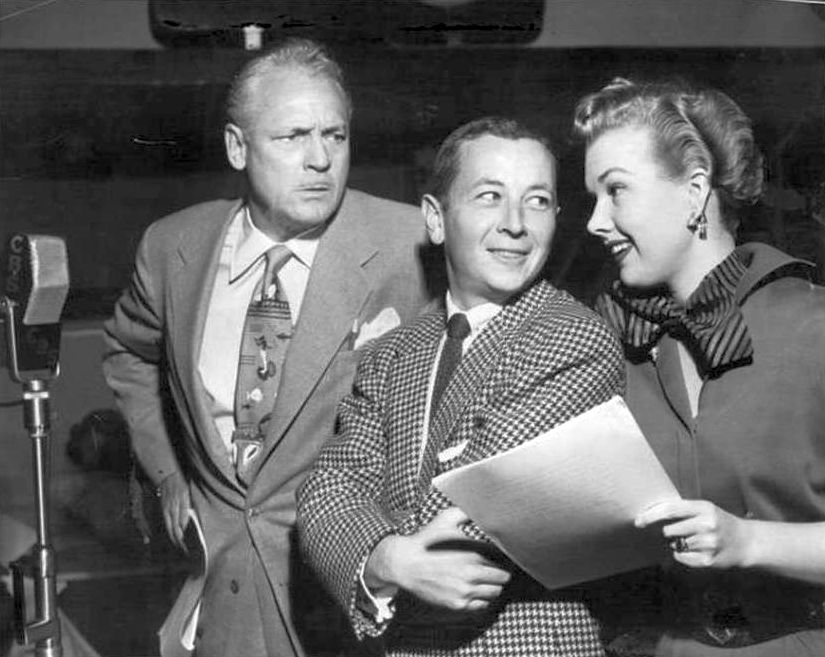“Well…that’s My Little Margie…”
Posted by Ivan G. Shreve, Jr. on Dec 7th 2019
The studio of legendary movie producer Hal Roach was known in the industry as the “Lot of Fun.” He quickly learned that his many years of producing quality two-reel comedy shorts in the silent and sound eras put him in good stead when the time came to creating content for television. Roach launched his first successful boob tube effort in the fall of 1950 with The Stu Erwin Show (also known as The Trouble with Father). He followed up that hit with a situation comedy based on his daughter Shari. He got the idea after an ugly quarrel with her, which resulted in the teen stomping-off to her room. Hal said to his wife: “My Lord, she’s hard to handle now. What’ll happen when she’s over 21 and we have no legal control over her?”
Roach turned this concept over to writer Frank Fox, who was inspired to name the title character of the show after his secretary. The program eventually came to air as My Little Margie. The creation of the other characters on the show, however, sprung solely from Fox’s imagination. My Little Margie made its radio debut over CBS on this date in 1952—yes, you read that right…radio!
An explanation is no doubt in order. As radio gradually ceded its home entertainment dominance to television in the 1950s, many of radio’s popular programs transitioned from the aural medium to the small screen. Stars like Jack Benny, George Burns, and Gracie Allen would launch successful TV series, as did longtime radio programs like The Lone Ranger and Suspense. But on occasion, the opposite would happen. An example of this is Space Patrol, a science fiction adventure which premiered on ABC-TV in March of 1950. Patrol would attract such a sizeable audience that a radio version was added in October of 1952. It ran for three seasons. Other TV-to-radio offerings included Tom Corbett, Space Cadet; Howdy Doody; What’s My Line; and Have Gun – Will Travel.
So before My Little Margie began entertaining radio audiences, homes with a TV set had been getting acquainted with the series since it premiered over CBS-TV on June 16, 1952. It was the summer replacement for I Love Lucy. Although Margie’s ratings couldn’t quite match the juggernaut that was Lucy, sponsor Philip Morris was impressed enough to continue with the series, which moved to NBC (after its initial 13-week run on CBS) in October. Assisting in the decision to keep Margie on the air was an exceptionally strong viewer response, in the form of a mail deluge, despite critics’ intense dislike of the show. (John Crosby dismissed Margie as “[A}n amazingly complete illustration of how not to make a TV show…”)

The concept of My Little Margie centered on the misadventures of Margie Albright (Gale Storm), a 21-year-old woman who lived in New York City with her father Vern (Charles Farrell) in the fashionable Carlton Arms Hotel. Margie had a knack for getting into farcical situations, many of them prompted by her father’s line of business. He was a vice-president at the investment firm of Honeywell and Todd, where his boss was the autocratic George Honeywell (Clarence Kolb). Margie, in attempting to either help her dad land clients or convince Old Man Honeywell to give him a raise and/or promotion, would manage to transform innocent events into full-blown catastrophes by the end of each half-hour episode. She received assistance from two confederates: her boyfriend Freddie Wilson (Don Hayden), who had difficulty holding onto a job, and elderly neighbor Clarissa Odetts (Gertrude Hoffman), who took particular delight in Margie’s screwball escapades. Rounding out the regulars were Vern’s sophisticated girlfriend Roberta Townsend (Hillary Brooke) and Charlie (Willie Best), the elevator operator in the Albrights’ building.
Six months after My Little Margie made its TV debut, the show premiered on CBS Radio on December 7, 1952. The move of the TV version to NBC in October had little impact on its radio fortunes. (It was sponsored by Philip Morris cigarettes throughout its entire run.) Gale Storm recalled in later years that the CBS network just wanted them to do a radio version, no questions asked. (On TV, the sponsorship of Margie would become the responsibility of the Scott Paper Company beginning in the fall of 1953.) Gale Storm and Charles Ferrell reprised their TV roles, but there was a new supporting cast. Radio audiences would hear Gil Stratton, Jr. (Freddie), Verna Felton (Mrs. Odetts), Will Wright (Mr. Honeywell), Doris Singleton (Roberta), and Shirley Mitchell. Johnny Jacobs and Roy Rowan handled the announcing chores. Although less than two dozen radio broadcasts have survived, the radio Margie relied on original scripts while airing concurrently with its TV counterpart. The radio Margie remained popular even in its final season, but it eventually bowed out on June 26, 1955. (Its TV sibling said goodbye on August 24th of that same year.)

At the same time that actress Gale Storm was convulsing both TV and radio audiences as the irrepressible Margie Albright, she was quite the fixture on the pop music charts with a steady string of Top Ten hits. Two of these singles, Ivory Tower (#6 in 1956) and Why Do Fools Fall in Love (#9 in 1956), are available on Heartbreak Hotel: Top 100—a 4-CD music collection available from Radio Spirits. We’ve also got a rare My Little Margie broadcast on our newest comedy compendium, Great Radio Sitcoms, which also features a virtual cornucopia of classic radio mirth makers. Happy anniversary, Margie…and Albright—you’re fired!

